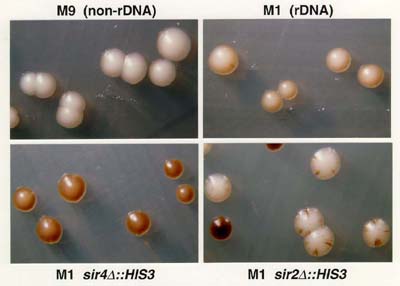
- 3g peptone
- 5g yeast extract
- 200mg ammonium sulfate
- 20g agar
- q.s. 800mL with water
- Autoclave
- 40g glucose (add 200mL 20%)
- 1g lead nitrate (add 2mL 0.5 g/mL) after agar has cooled to <=55 degrees
- Mix well
Currently, lead dropout medium does not work. Phosphates and sulfates in YNB precipitate the lead when added. Synthetic complete (SC) medium (without lead) should also lack cysteine, as cysteine can be converted by S. cerevisiae into methionine via a MET15 independent pathway.
- 3g peptone
- 5g yeast extract
- 200mg ammonium sulfate
- 20g agar
- q.s. 800mL with water
- Autoclave
- 40g glucose (add 200mL 20%)
- 1 uM methylmercury chloride (AlfaAesar) after agar has cooled to <= 55degrees
- Mix well
Methyl mercury links:
- Mercury Toxicology- lots of abstracts
- Minamata Disease
- HHS Toxic Substances and Disease Registry
- The Scientist- the death of Karen Wetterhahn
Despite all of the above, methylmercury(II) chloride has been used safely and successfully to isolate met15 mutants. (Cost and Boeke unpubl. data, and Dolinski et al.-see below)